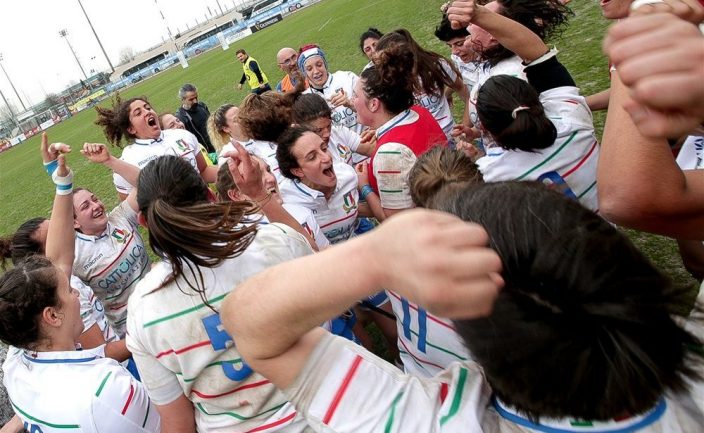The FIR, the Italian Rugby Federation, is in the throes of reorganising its Women’s division.
They are basking in the glory of a highest-ever second place in the Six Nations, but as the nation most likely to move into the elite group in the near future, it’s concerning to see the difficulties they face in broadening the game’s appeal. The numbers don’t quite add up.
There are about 8,000 active female rugby players in the country. The elite end (Serie A) numbers nineteen clubs split into two divisions. They are supposed to field 23 players for each fixture, so that adds up to the unmemorable total of 437. But several clubs fail to reach this mark. There are empty spaces on the bench – and that is a worry.
Already we can detect some interesting contrasts with the patterns established through the Tyrrells Premier 15s and French Top 16. England has only ten elite clubs. That figure may or may not be extended after next year’s rethink; and Tyrrells clubs put out only 22 players per match – though their commitments are doubled by having to field two sides.
This season France took the major step of merging its top two divisions. As we have suggested before, it will take a while for the benefits of this brave step to show.
The risk in England is that the imbalances between the top ten clubs and the rest of the country will widen. That may be fine for the England selectors in the short term, but even within this small group huge disparities have shown up.
A few rough stats: at the start of the 2017-18 season Darlington Mowden Park Sharks had five past and present England internationals on their strength. In the last round of the 2018-9 season they had one past cap left.
Firwood Waterloo have one current international on their books, the highly promising Sarah Beckett.
By contrast, Loughborough Lightning started from scratch. They brought in players from all over the place – not least the fall-guys, Lichfield – so that they qualified for the play-off stages of both 2018 and 2019.
The Red Roses’ contracted squad is largely in the hands of three clubs: Saracens with 8 players; Quins 7 and Lightning 7. That’s 22 out of 35, which militates against any drive for a wider spread of talent across the country.
A comparison: of the 28 players selected to represent France in the recent Six Nations, twelve came from the two traditional strongholds Montpellier and Stade Toulousain. That left a decent number over to cover the remaining regions.
Back to Italy – their two leading clubs, Rugby Colorno and Iniziative Villorba Rugby, boasted ‘only’ ten players in the 23 against France in the final round of the 6N. That’s a relief, because their runaway victories in Serie A had given a lopsided view of the women’s rugby programme across the nation.
On Day 13 of the Italian Championship we find more such scores: Valsugana, lying third, won 131-7. Fortunately Colorno and the leaders Villorba halted at 83 and 58 points respectively.
The cream will always rise to the top. The question is whether that is best for a sport. These days men’s elite football in England is dominated by three major cities. In another sport that is still finding its way, women’s rugby, surely it’s preferable for the talent to be spread far and wide, to provide the broad base that is always thought best for any sport. Of the ten Tyrrells clubs, three had one representative each in the Six Nations squad this year: Firwood Waterloo (Sarah Beckett), Richmond (Rowena Burnfield), and Worcester Valkyries (Lark Davies). DMP had none.
It may well be an asset to have club-mates playing in the test side – it helps familiarity – but it doesn’t help grass-roots growth throughout the land. A tricky conundrum.
But let Italy enjoy their turn in the spotlight. They were delighted to find three of their number figuring in Alison Donnelly’s scrumqueens.com selection of a Choice XV from the 2019 Six Nations: Giado Franco (for the second year running), Beatrice Rigoni and the skipper, Manuela Furlan. Beyond that, Andrea Di Giandomenico was the worthy recipient of the award for Coach of the Tournament. He has patiently guided the Azzurre to this success over nearly a decade. Now they sit a proud sixth in the world rankings, less than a point behind the USA.









